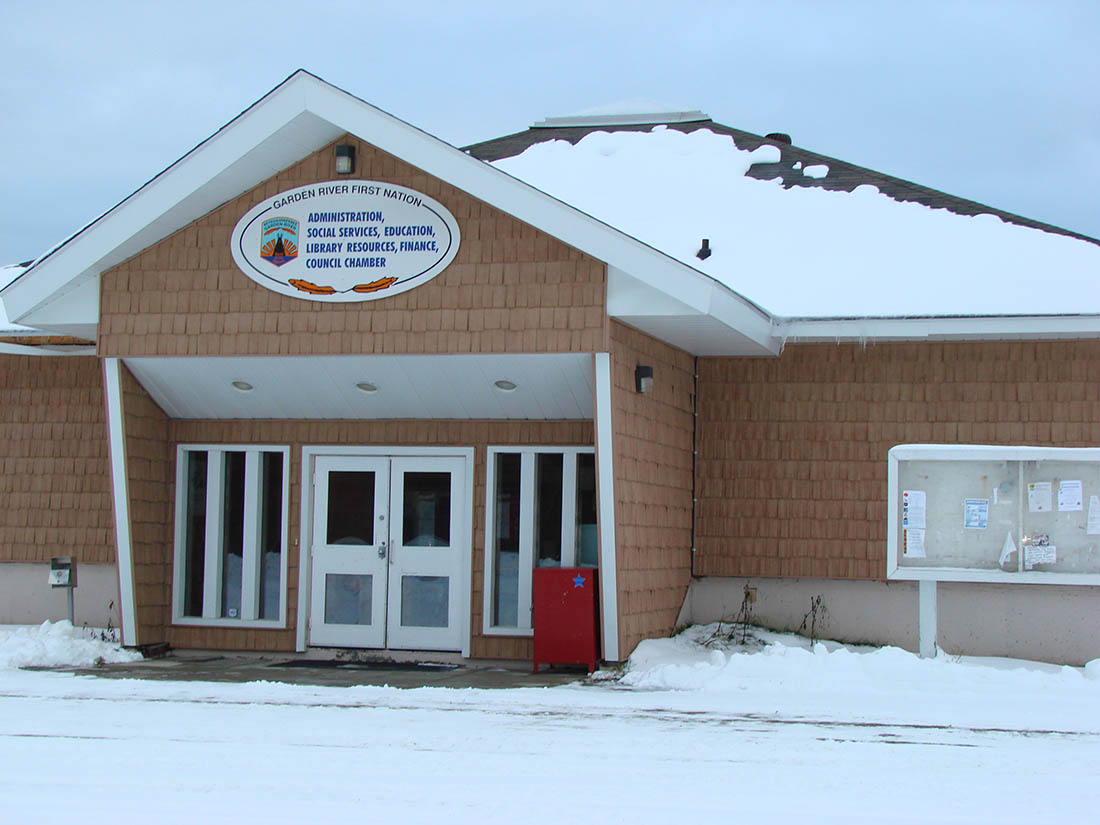Browse "Places"
-
Article
Fundy National Park
Fundy National Park (established 1948, 205.9 km2), renowned for its high tides averaging 9 m, stretches for 13 km along the Bay of Fundy and extends inland where wooded hills are cut by deep valleys and tumbling streams.
"https://development.thecanadianencyclopedia.ca/images/tce_placeholder.jpg?v=e9dca980c9bdb3aa11e832e7ea94f5d9" // resources/views/front/categories/view.blade.php
https://development.thecanadianencyclopedia.ca/images/tce_placeholder.jpg?v=e9dca980c9bdb3aa11e832e7ea94f5d9
-
Article
Funk Island
Funk Island, 25 ha, is a flat, 15 m high, wedge-shaped granite island 800 m by 400 m lying 60 km off Newfoundland's northeast coast, east of FOGO ISLAND. The origin of the name is unknown, though it may have been inspired by the smell of the guano that covers much of the island.
"https://development.thecanadianencyclopedia.ca/images/tce_placeholder.jpg?v=e9dca980c9bdb3aa11e832e7ea94f5d9" // resources/views/front/categories/view.blade.php
https://development.thecanadianencyclopedia.ca/images/tce_placeholder.jpg?v=e9dca980c9bdb3aa11e832e7ea94f5d9
-
Article
Fur Trade Route Networks
Throughout the period of the historical fur trade (early 17th to the mid-19th century), water routes were the natural “highways” of First Nations trappers and European fur traders. Water trading networks connected Indigenous societies from the Atlantic Ocean, along the St. Lawrence River to the Great Lakes, and then on towards the Hudson Bay watershed. North America’s waterborne geography facilitated intracontinental travel, enabled European expansion and settlement into Indigenous North America, and shaped the contours of Euro-Indigenous relations in the context of the fur trade. These extensive and interconnected systems of rivers, lakes and overland trails criss-crossed Indigenous territories and had been used for generations. At the height of the fur trade, the principal canoe route extended westward from the Island of Montreal through the Great Lakes, and from the northwestern shore of Lake Superior over the height of land into the Hudson Bay watershed. From the Lake Winnipeg basin, Indigenous trappers and European traders fanned out towards the Western Prairies via the Assiniboine, Qu’Appelle and Souris rivers, towards the foothills of the Rocky Mountains via the North and South branches of the Saskatchewan River, and finally towards the Athabasca Country via the Sturgeon-weir River and the Methye Portage.
"https://d2ttikhf7xbzbs.cloudfront.net/media/media/6a52818a-3f78-427a-a201-5e6bc9c5d874.jpg" // resources/views/front/categories/view.blade.php
https://d2ttikhf7xbzbs.cloudfront.net/media/media/6a52818a-3f78-427a-a201-5e6bc9c5d874.jpg
-
Article
Fury and Hecla Strait
Fury and Hecla Strait is located at the northern end of Foxe Basin, connecting the basin with the Gulf of Boothia, and separating Melville Peninsula on the mainland and Baffin Island to the north.
"https://d2ttikhf7xbzbs.cloudfront.net/media/media/4aad02e3-72bd-400c-87ab-d1380ccad4dc.jpg" // resources/views/front/categories/view.blade.php
https://d2ttikhf7xbzbs.cloudfront.net/media/media/4aad02e3-72bd-400c-87ab-d1380ccad4dc.jpg
-
Article
Gagetown
Gagetown, NB, incorporated as a village in 1966, population 698 (2011c), 719 (2006c). The Village of Gagetown is situated on Gagetown Creek, adjacent to the SAINT JOHN RIVER and opposite the mouth of the Jemseg River.
"https://development.thecanadianencyclopedia.ca/images/tce_placeholder.jpg?v=e9dca980c9bdb3aa11e832e7ea94f5d9" // resources/views/front/categories/view.blade.php
https://development.thecanadianencyclopedia.ca/images/tce_placeholder.jpg?v=e9dca980c9bdb3aa11e832e7ea94f5d9
-
Article
Galiano Island
Galiano Island, 5787 ha, is one of BC's GULF ISLANDS, named for Spanish navy commander Dionisio Alcalá-Galiano, who explored the area in 1792. It has the driest climate of the islands.
"https://development.thecanadianencyclopedia.ca/images/tce_placeholder.jpg?v=e9dca980c9bdb3aa11e832e7ea94f5d9" // resources/views/front/categories/view.blade.php
https://development.thecanadianencyclopedia.ca/images/tce_placeholder.jpg?v=e9dca980c9bdb3aa11e832e7ea94f5d9
-
"https://d2ttikhf7xbzbs.cloudfront.net/1200px-Old_Post_Office_Galt_Cambridge_Ontario.jpg" // resources/views/front/categories/view.blade.php
https://d2ttikhf7xbzbs.cloudfront.net/1200px-Old_Post_Office_Galt_Cambridge_Ontario.jpg
-
Article
Gambo
Gambo, NL, incorporated as a town in 1964, population 1984 (2011c), 2072 (2006c). The Town of Gambo is an amalgamation of three communities - Dark Cove, Middle Brook and Gambo - stretching along the shore at the end of Freshwater Bay, a long indraft of BONAVISTA BAY.
"https://development.thecanadianencyclopedia.ca/images/tce_placeholder.jpg?v=e9dca980c9bdb3aa11e832e7ea94f5d9" // resources/views/front/categories/view.blade.php
https://development.thecanadianencyclopedia.ca/images/tce_placeholder.jpg?v=e9dca980c9bdb3aa11e832e7ea94f5d9
-
Article
Gananoque
Gananoque, Ont, incorporated as a town in 1890, population 5194 (2011c), 5285 (2006c). The Town of Gananoque is located at the confluence of the St Lawrence and Gananoque rivers, 29 km east of Kingston.
"https://development.thecanadianencyclopedia.ca/images/tce_placeholder.jpg?v=e9dca980c9bdb3aa11e832e7ea94f5d9" // resources/views/front/categories/view.blade.php
https://development.thecanadianencyclopedia.ca/images/tce_placeholder.jpg?v=e9dca980c9bdb3aa11e832e7ea94f5d9
-
Article
Gander
Gander, NL, incorporated as a town in 1954, population 11 054 (2011c), 9951 (2006c). The town of Gander is located on Gander Lake in east-central Newfoundland.
"https://d2ttikhf7xbzbs.cloudfront.net/media/media/764011ce-af40-4a99-8f26-769c9903d7da.jpg" // resources/views/front/categories/view.blade.php
https://d2ttikhf7xbzbs.cloudfront.net/media/media/764011ce-af40-4a99-8f26-769c9903d7da.jpg
-
Article
Gander River
Gander River, 175 km long, drainage basin 6400 km2, is the principal river of northeast Newfoundland, emptying into Gander Bay. Named for its abundant geese, it rises in the central plateau and eventually falls 427 m to the Atlantic.
"https://development.thecanadianencyclopedia.ca/images/tce_placeholder.jpg?v=e9dca980c9bdb3aa11e832e7ea94f5d9" // resources/views/front/categories/view.blade.php
https://development.thecanadianencyclopedia.ca/images/tce_placeholder.jpg?v=e9dca980c9bdb3aa11e832e7ea94f5d9
-
Article
Ganges
Ganges, BC, Unincorporated Place. Ganges is the major community centre of SALTSPRING ISLAND, the largest island in the southern GULF ISLANDS chain. Named after HMS Ganges, flagship of the Pacific Station 1857-60, it is located at
"https://development.thecanadianencyclopedia.ca/images/tce_placeholder.jpg?v=e9dca980c9bdb3aa11e832e7ea94f5d9" // resources/views/front/categories/view.blade.php
https://development.thecanadianencyclopedia.ca/images/tce_placeholder.jpg?v=e9dca980c9bdb3aa11e832e7ea94f5d9
-
Article
Garden River First Nation
Garden River First Nation refers to both an Anishinaabe community and a reserve. The reserve, legally known as Garden River 14, consists of over 20,700 hectares of land, located along the St. Mary’s River in Ontario (see also Reserves in Ontario; First Nations in Ontario). The community and reserve are named after a tributary of the St. Mary’s River. The Anishinaabe planted gardens at the mouth of the tributary. As of September 2024, Garden River has a total registered population of 3,558 people, with 2,234 residing off reserve. It is governed by an elected Chief and council under the terms of the First Nations Elections Act.
"https://d2ttikhf7xbzbs.cloudfront.net/GardenRiverFirstNation/band-office_resized.jpg" // resources/views/front/categories/view.blade.php
https://d2ttikhf7xbzbs.cloudfront.net/GardenRiverFirstNation/band-office_resized.jpg
-
Article
Garibaldi Provincial Park
Natural History The mountains, which dominate the park and rise to 2678 m at Mount Garibaldi, are of recent volcanic origin. Lava from Price Mountain created a dam allowing 300 m deep Lake Garibaldi to form.
"https://d2ttikhf7xbzbs.cloudfront.net/media/media/422e8bec-0d3c-48b7-b19e-f4fd6cfaaa96.jpg" // resources/views/front/categories/view.blade.php
https://d2ttikhf7xbzbs.cloudfront.net/media/media/422e8bec-0d3c-48b7-b19e-f4fd6cfaaa96.jpg
-
Article
Garson
Garson, Manitoba, unincorporated village, population 483 (2011c), 324 (2006c). Garson was incorporated as the Village of Lyall in 1915 and amalgamated into the Rural Municipality of Brokenhead in 2003. The community is located 37 km northeast of Winnipeg.
"https://development.thecanadianencyclopedia.ca/images/tce_placeholder.jpg?v=e9dca980c9bdb3aa11e832e7ea94f5d9" // resources/views/front/categories/view.blade.php
https://development.thecanadianencyclopedia.ca/images/tce_placeholder.jpg?v=e9dca980c9bdb3aa11e832e7ea94f5d9
